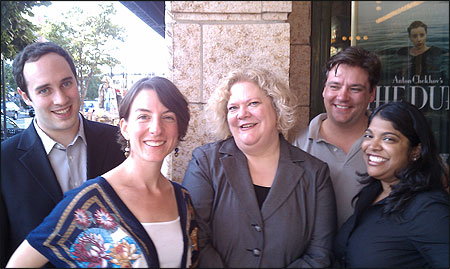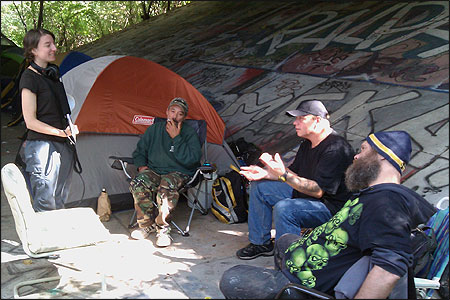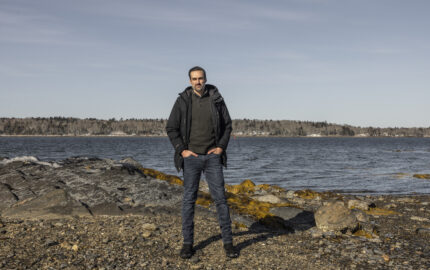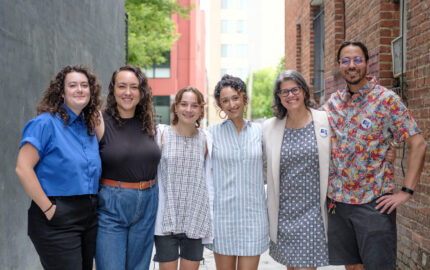
Throughout much of the 20th century, Detroit, Cleveland and Chicago were industrial boomtowns. Hundreds of thousands of people flocked to them from all over the country and all over the world in the Midwest’s equivalent of the Gold Rush. Between 1947 and 1977, the region’s heyday, the arc of many young lives seemed predestined—graduate from high school and walk across the street for a job in a factory. Sometimes it didn’t even take a diploma. All that was needed was a contact on the inside, such as a brother, a father, an uncle, or just a pal from the neighborhood.
Now, in a global economy, the region’s dynamics have shifted from building to buying, and those boomtowns are no more. Detroit and Cleveland have seen their populations drop by half, as carmakers and parts suppliers shrink. While Chicago gleams on the surface, it has an estimated 3,000 acres of abandoned and contaminated buildings largely hidden from tourists’ view. With that decline, residents of Michigan, Ohio and Illinois have to learn new skills that will lead them back to stability and perhaps prosperity someday.
Our job as journalists at Changing Gears: Remaking the Manufacturing Belt, a public media project, is to report the situation and address the region’s prospects. Although our reporting assignments focus on core issues such as the economy and jobs, we also look to other beats—food and culture, to name just two—to tackle the breadth of issues facing the industrial Midwest.
At its core, our beat is the region from Duluth, Minnesota to Buffalo, New York and the states and towns in between, although our subject of reinvention is not limited simply by geography. That’s the wide-angle view.
Within the industrial Midwest, we decided to zoom in on five major themes, which we call mini-beats. These are jobs and job creation, community redevelopment, education, the environment (a topic of great interest to those residing near the Great Lakes), and agriculture. In addition, we are exploring cultural issues, from ethnic diversity to the arts and food.
The mini-beats create opportunities for individual series designed to involve our listeners. They include “Still Working,” occasional reports in which we highlight older individuals still at their jobs. “Our Towns” is a series that gives us the opportunity to tackle broader issues while checking in with people who live in Sandusky, Ohio; Kenosha, Wisconsin; and Kalamazoo, Michigan.
Launching Changing Gears
Changing Gears started to broadcast its stories and publish them on its website in September. Officially called the Upper Midwest Local Journalism Center, the project is funded by the Corporation for Public Broadcasting as part of an initiative that created a series of local journalism centers across the country.
The idea was two-fold:
- Cover topics of vital regional interest—and do so by having reporters’ stories revolve around the shared concerns of those who are experiencing a sense of disconnection and decline.
- Bring together as newsgathering partners public radio and television stations in the region, including WBEZ in Chicago, Ann Arbor-based Michigan Radio, and ideastream, which is public radio and TV in Cleveland.
In June, I left The New York Times to become the project’s senior editor and direct a team that includes reporters in three cities. Niala Boodhoo, formerly of The Miami Herald, is based in Chicago. Kate Davidson, a veteran producer for NPR, works in Ann Arbor, and Dan Bobkoff, previously with WCPN in Cleveland, remains there, along with our senior Web producer George Nemeth.
Although the challenges facing this Midwest region are primarily economic, Changing Gears’ mandate is more than to just tell business stories. We explore the daily lives of people who live here—young and old (and in between)—as we cover cultural topics, such as the food scene, which is the subject of a Web feature we call “Reinvention Recipes.” This winter, we’ll spend time on the music scene as we team up with Sound Opinions, the rock and roll show based at WBEZ, for a contest intended to discover Midwest musical talent. It will culminate in a symposium and concert at the Rock and Roll Hall of Fame in Cleveland, and listeners will pick the winner.
Listener involvement is a key part of Changing Gears since this is conceived as a two-way conversation. On September 24, we kicked that off with a call-in show examining whether government officials should focus more on big city problems or on boosting smaller communities with fewer obstacles to overcome. There will be a number of public events in each partnership city.
Yet, in everything we do—stories, documentaries, special reports—and on every platform on which our stories appear, our focus stays fixed on this upper Midwest region, an unusual approach for both the journalists and their home stations.
To be sure, regional coverage happens at big newspapers like my former home, The New York Times, where it has been common for bureau reporters to cover a dozen or so states. However, at other national newspapers, such as The Washington Post, even some prominent domestic bureaus (such as New York City) have been shuttered, and most newsmagazine bureaus are no more. Network news organizations long operated bureaus in different parts of the country, although many are now closed.
This method of coverage—emanating from the hub outward—has been less common at public radio. While NPR has bureaus in the United States and around the world, each of the 764 stations affiliated with NPR have often gone its own way on local news, though many issues might pique the interest of listeners in nearby states. Changing Gears is different because its reporters are asked to assume a broader perspective than their home city as they prepare their stories.
For a reporter like Bobkoff, whose previous job was to cover business in Cleveland and northeast Ohio, the shift has required adjustments as the scope of the story expands to fit its regional boundaries and its focus gets tighter on the primary topic of transition. “It’s a lot like being a national reporter in that we have to answer the question ‘Why do I care if I live more than 100 miles from here?’ ” he says. “Often it’s as simple as taking a step back and asking ‘What’s the bigger picture here? Is this happening in a larger way?’ ”

Regional Focus
The Changing Gears website personifies the nature of our beat. Having reporters based in three cities helps to keep the stories focused on the regional mission. “Our challenge is to make sure we don’t become too provincial and lose sight of the whole region,” Bobkoff says. “For instance, I may do a story from Cleveland, but it has to tell some truths about what’s happening in Michigan or Illinois.” On a story about the importance of fall tourism to the area’s economy, Boodhoo traced the progression of the changing autumn leaves with links to maps of Wisconsin and Michigan.
Changing Gears is not a chamber of commerce. Our job is to explore and explain, not to promote. And the rebuilding stories we tell bring with them some uncomfortable truths. On the same day that Boodhoo’s color tour story ran, Changing Gears stations also aired a feature by Davidson, who went canoeing and discovered evidence of the poor economy:
The other day, friends and I decided to see the fall colors for ourselves. So we spent an afternoon paddling down the Huron River. It’s something both tourists and locals love to do when the weather’s fine. Crimson and yellow shone from the banks. But we noticed splashes of color that weren’t from the leaves. They were from the bright tents of homeless camps.
Even as the states are trying to put on their best face, it seems, reality can intrude. With Changing Gears, we are looking at that reality, good and bad, for a region whose identity no longer stems from the factories that fueled its boom. It’s an effort that adds to, but doesn’t replace, the job that individual news organizations are doing, both in this area and outside of it. “We can go more in-depth and specific than a national piece might and can maybe help people who live here think more broadly about where they live,” says Bobkoff. “But we’re not going to cover the local school board. That’s why we need strong local journalism too.”
Micheline Maynard is the senior editor of Changing Gears. After joining the staff of The New York Times in 2004, she served as its Detroit bureau chief and aviation reporter. She became a senior business correspondent in 2008 and was a lead reporter in the paper’s coverage of the automobile industry bailout. She is the author of four books including her most recent, “The Selling of the American Economy: How Foreign Companies Are Remaking the American Dream,” published by Random House in 2009.



